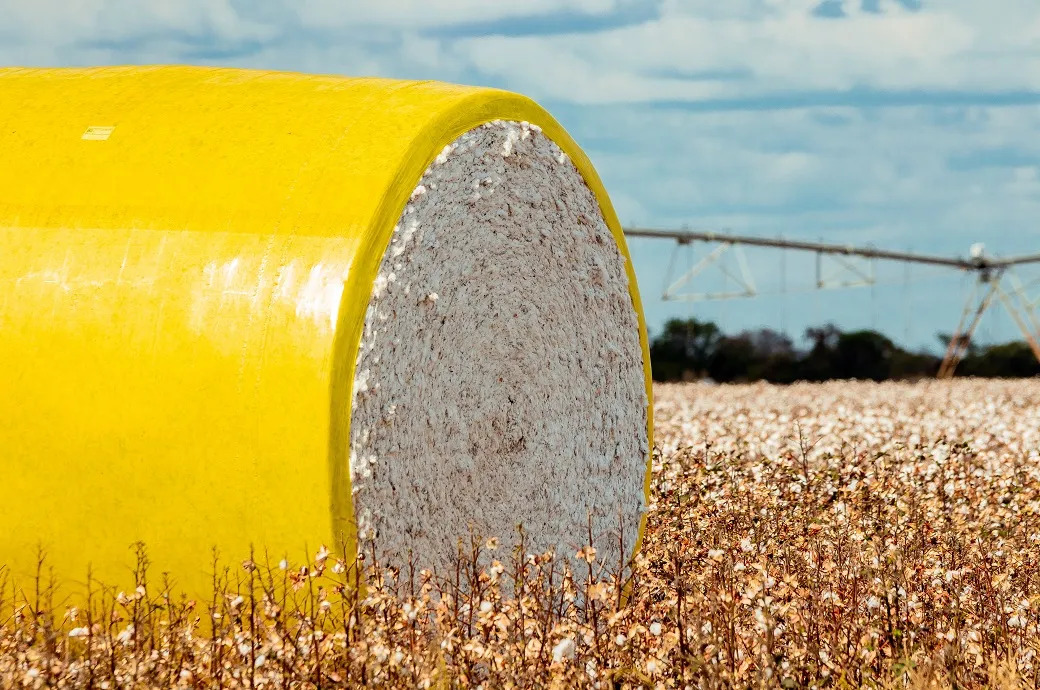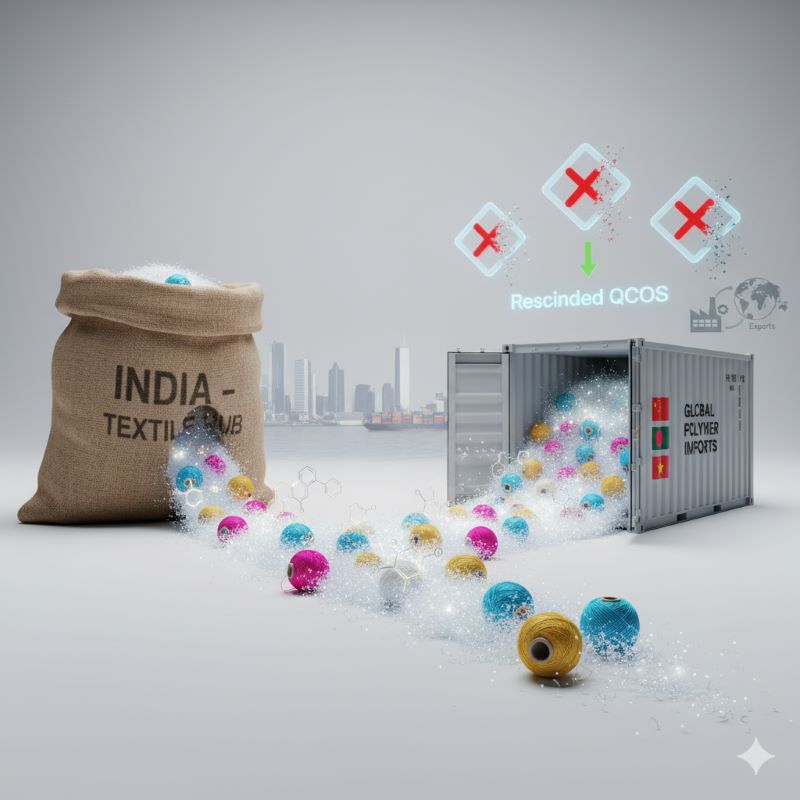FW
Pakistan Readymade Garments Manufacturers and Exporters Association (PRGMEA) Central Chairman Shaikh Mohammad Shafiq, in a statement, congratulated Dr. Miftah Ismail’s appointment as Adviser to the Prime Minister on Finance, Revenue and Economic Affairs, with the status of Federal Minister.
Shafiq expressed full confidence in Dr. Miftah’s ability and expertise to uplift the economy as he is a renowned businessman. Referring the TV talk show, he appreciated his enthusiasm to focus on resolving social and economic challenges faced by the county. He requested the PM to support him to achieve his goals, however, he notes that the Government needs to provide a conducive environment by reducing cost of inputs to achieve export targets.
Despite of capabilities and qualities of leadership Miftah can't achieve export targets unless he takes steps for the removal of hurdles hindering exports of textile sector. They should invite and consult with us to overcome these, he averred.
He urged all the stakeholders to play their role and trade Associations can also play a vital role and provide assistance in this regard. PRGMEA is a largest representative of value added sector, it can be beneficial to overcome these issues if takeen into confidence.
Utilities cost such as electric, gas and water are very high compare to our competitor country, he decried, for instance steam cost per ton per hour for Pakistan is US$ 16.44 and for Bangladesh its only US$ 5.6; whereas the Electricity/Kwh for Pakistan is 0.21$ while in Bangladesh it is 0.11$
The PRGMEA Chairman highlighted the fact that the low cost of labour in Bangladesh goes in favour of exporters. While the minimum wage is around $68 in Bangladesh, in Pakistan it is $125 and rising. Their exports are now increasing at $3.5 billion per year and expected to hit $50 billion per year by 2020. Additionally the lower utilities cost further benefits the manufacturer, he pointed out. Terming funds blockage as another reason behind the continuous drop in exports. He said the export sector was unable to tap its potential as per its capacity.
Pakistan's major competitors such as India, Bangladesh and China were utilising all the channels and resources for capturing world market. “Under the prevailing situation we need to opt for similar approach to survive well in the market.” He advised.
Manchester and the surrounding area were built on the success of spinning and sewing during the first industrial revolution, until an interesting nickname called Cottonopolis.
But then production began to slow down, the emergence of Manchester Ship Canal and imports began to be done. Now after 40 years, cotton is once again back on the production line.
Through an investment of £ 6 million, UK cotton textile producers have begun demand for imported cotton from Southern California and in Manchester, the production of yarns used throughout the region in the supply chain will be reopened.
Director of English Fine Cottons Tracy Hawkins says that it has really come back involving weavers, finisher to dye to jointly form the supply chain again. There is a great desire to provide quality and excellent materials produced from the UK and are made here.
The company decided to follow the supply chain from bale to rail, to be a challenge in the garment business. At the top of the industry, an estimated eight billion yards of fabric was produced in 1912.
India will "leapfrog" Britain and France to become the world's fifth largest economy in 2018, ahead of an oncoming major global economic shift towards Asia, according to a British research organisation.
The World Economic League Table (WELT) 2018 released by Centre for Economics and Business Research (CEBR) said that in dollar terms, India will rise from its seventh rank to overtake those European economies next year despite the stumble of demonetisation and the introduction of Goods and Services Tax (GST).
Indian infrastructural projects will rebuild the world's most populous country, which will spend an amount as large as Canada's GDP on infrastructure.
Key projects include the Delhi-Mumbai Industrial Corridor, the Indian Smart Cities Project and more than 80,000 kms of new highways.
It was only in 1906 that the UK economy overtook the Indian economy, while the French economy was smaller than the Indian economy until 1951.
The growth in the Indian economy will also drive the rest of South Asia. Korea and Indonesia are expected to join list of the world's top 10 economies, with Taiwan, Thailand, Philippines and Pakistan making the top 25 list. Its other South-Asian counter parts like Pakistan will rise from the 41st position in 2017 to 25th in 2032, while Bangladesh will rise from the 43rd position to 31st in 2032.
Regarding China, the report stated that the country will overtake the US economy in 2030. This remains a remarkable achievement from an economy that was only 12 per cent the size of the US economy as recently as 2000, it added.
Since the impact of US President Donald Trump on trade has been less severe than expected, the report said the United States will retain the number one spot for a year longer, till 2029, than it was anticipated in the 2017.
James Munson, took over as MD of Marks and Spencer Reliance India Pvt. Ltd. in May.In 2011, when he was the marketing head in India, the company strived to sell women’s shorts with not much success, however, currently there’s demand is exponentially rising and Munson is all set to take the British retailer’s reins and lead it to success with low-priced products and new stores in India.
Marks and Spencer Group Plc. (M&S), which has a joint venture with Reliance Retail Ltd., has 62 stores in India. The retailer also sells the M&S brand on three online shopping sites, Myntra, AJIO and Amazon.
James sees India rising in line with international fashion trends, there is an alignment of fashion. In India, there is a greater demand for colour and print. We make sure with our local sourcing that we get additional colour and print into our stores here.
From a business perspective, James, sees India as increasingly becoming a competitive market, “which is good for us as well as the consumers”. The malls have professionalised in terms of investments.
James sees Indian customers increasingly follow global trends. For example, we’ve recorded a 62 per cent increase in the sale of dresses since last year as well as a 25 per cent increase in swimwear sales during 2017. Customers have brought into trends and key pieces such as the statement sleeves, embroidered detailing and patches across dresses.
James discloses that they are focusing on getting opening price points right to give the customer value for money. “We are pushing these value credentials in segments where we have real authority, like lingerie. Bras are growing at a rate of 31 per cent year-on-year and this year, we introduced a starting range of bras at Rs799, which was Rs1,299 last year. We have sold 86,000 units of that range so far this year”.
“We introduced a range of Rs999 in men’s polo T-shirts, which is starting to get traction. We have also introduced a ladies dresses line at Rs1,999, which has done phenomenally well. There is exponential growth in dresses” he added.
Why shift in price points? “It’s a combination of reviewing as to where we sit in the market, our ability to make sure that we have a very strong local sourcing base and that we are able to drive real value to our customers. Today, about 65 per cent of what we source for our business comes from India, Sri Lanka and Bangladesh; 30 per cent of our sourcing is directly from India itself, he discloses and adds, this gives us the benefit on supply chain and allows us to pass that benefit onto customers. But it’s not just about prices. It’s a combination of making sure that we are offering regular fashion in our stores at a price point that is compelling.”
The 2nd edition of Textyle-Expo will run from April 2 to 5, 2018 in Oran, Algeria. Despite the fact that the Algerian textiles and fashion industry significantly relies on imports, the Government is encouraging domestic production.
April 2 to 5, 2018 will see the 2nd edition of the International Textile and Fashion Fair - Textyle-Expo at the Mohamed Bem Ahmed Convention Center in Oran, Algeria. The event’s website revealed that the industry show’s first edition, in 2017, featured some 110 exhibitors and welcomed over 6,000 local and international visitors from countries including Tunisia, China, India, Taiwan, Turkey, the US and Europe.
Simultaneously along with the expo, a conference will take place in the Wahran Room of the Le Méridien Hotel. It will feature discussions on fashion, technology and markets with local and international industry specialists on the panel.
Panels will cover subjects including Algeria’s new investments law, the revitalisation of the country’s textile industry, the European consumer market and exports from the EU and the competitiveness of leather items.
A fashion shows will also be held, the same as in the first edition, with designers showcasing their collection. The Textyle-Expo website says only 6 per cent of clothing needs in Algeria are met by the domestic industry, with imports making up the remainder.
Apparel Export promotion council (AEPC) has begun an incubation and resource center at its head office in Gurgaon. The center will provide an opportunity to startups to connect with investors, mentors and corporates it will also serve as a startup Incubation center where entrepreneurs from Textile/ Apparel/ Fashion sector will work, interact and accelerate their companies. The resource facility will also provide an opportunity to startup entrepreneurs to undergo training and participate in workshops and competitions conducted by the Industry partners of AEPC.
AEPC Chairman Ashok Rajani says that, India is world’s second largest exporter of textiles and the textile and clothing sector accounts for around 5 per cent of country's GDP and 15 per cent of Industrial output Supporting Indian manufacturing companies to enter and expand in foreign markets is one of the main mission of the AEPC and to help the council in the fulfillment of its objective, the AEPC Incubation and Resource facility has been initiated. The Centre will act as an Innovation hub and information dissemination center for the innovators and industry, bridging the gap between them.
To facilitate creation of new knowledge through acquisition, organization and dissemination of knowledge resources the AEPC Incubation and Resource center is envisioned to provide information to exporters on foreign markets, to serve as a Startup Incubation center.
Incorporated in 1978, AEPC is the official body of apparel exporters in India that provides invaluable assistance to Indian exporters as well as importers/ international buyers who choose India as their preferred sourcing destination for garments.
Biryogo market in Kigali, sold garments those are discards from men living in countries thousands of miles away.
But last year, Rwanda, Kenya, Tanzania, Uganda and Burundi announced their intention to phase out imports of second hand clothing and shoes from western countries by 2019.
But the decision in Rwanda has divided the population and left the tiny landlocked country in a trade dispute with the US. 'It's about our dignity’ says the country.
The report analyses worldwide production, trade and consumption stated that the Man-made fibres (MMF) production grew by around 5 per cent annually in the last 10 years while those of cotton and wool fell by 1.6 per cent and 1.2 per cent respectively, says the 53rd edition of ‘Information on Man-made Fibres’ published by the European Man-made Fibres Association (CIRFS).
The report also said that Europe is the world’s largest exporter of acrylic and cellulosic fibres and the biggest producer of ultra-high strength fibres and of polypropylene fibres. It is one of the global leaders in man-made fibres innovation and quality and its output is used in fashion, home textiles and various technical uses.
According to the director general Frederic Van Houte the European man-made fibres industry is the largest supplier of raw materials to the European textile industry.
Last fall, Paris-headquartered womenswear brand Ba &Sh opened a handful of boutiques on the East Coast. Now it is getting ready to unveil a new store in Beverly Hills, Calif.
The company recently put up storefront posters at 404 N. Beverly Drive announcing it will be doing business soon at the corner of Brighton Way and Beverly Drive. The 1,600-square-foot space was the former address for an Aldo footwear boutique and a location for the Kimora Lee Simmons brand.
The name Ba &Sh stands for the first names of founders Barbara Boccara and Sharon Krief, friends since childhood in France. They introduced the brand in 2003. Currently it is sold at more than 400 locations around the globe.
In 2015, private-equity firm L Catterton acquired 50 percent of the brand for an undisclosed amount to support Ba &Sh’s international expansion.
L Catterton is a partnership of luxe conglomerate LVMH; GroupeArnault, the family holding company of Bernard Arnault, LVMH’s chairman and chief executive officer; and U.S. private-equity company Catterton. Its portfolio of brands includes Rhon
Under the banner ‘Sustainable Backings’ Freudenberg Performance Materials will be exhibiting at Domotex in Hannover, Germany, from January 12 to 15, 2018. At Domotex, the world's leading trade fair for floor coverings, Freudenberg Performance Materials will be presenting its spunlaid nonwovens. These are an essential component of high-quality textile floor coverings.
As a leading global manufacturer of innovative technical textiles, the company will also be highlighting its contribution in helping carpet manufacturers to design more sustainable products and reduce their environmental footprint, yet maintain high stability and uniformity.
Manufactured using a proprietary Freudenberg technology, polyester spunlaids fulfils the demand for high-quality primary and secondary backings for carpet tiles, broadloom carpets and walk-off mats. They provide high dimensional stability, reliable and precise pattern repeat, exceptional lay-flat characteristics and constant surface uniformity.
Non-fraying edges permit precision fitting of carpet tiles as well as wall-to-wall applications. Freudenberg’seco-friendlytuft backings enable carpet manufacturers to combine high performance and sustainability in their products. At the fair, the company will be presenting their eco-friendly tuft materials for use as primary and secondary backings for carpets and carpet tiles. These products are made from recycled polyester, are 100 per cent recyclable and contain no chemical binders.
Taking inspiration from this year’s Domotex theme ‘Unique Youniverse’, Freudenberg’s stand will provide a unique experience with an immersive design and a carpet printed especially for the trade fair using the latest digital carpet printing technology. The carpet naturally features a Freudenberg primary backing.












